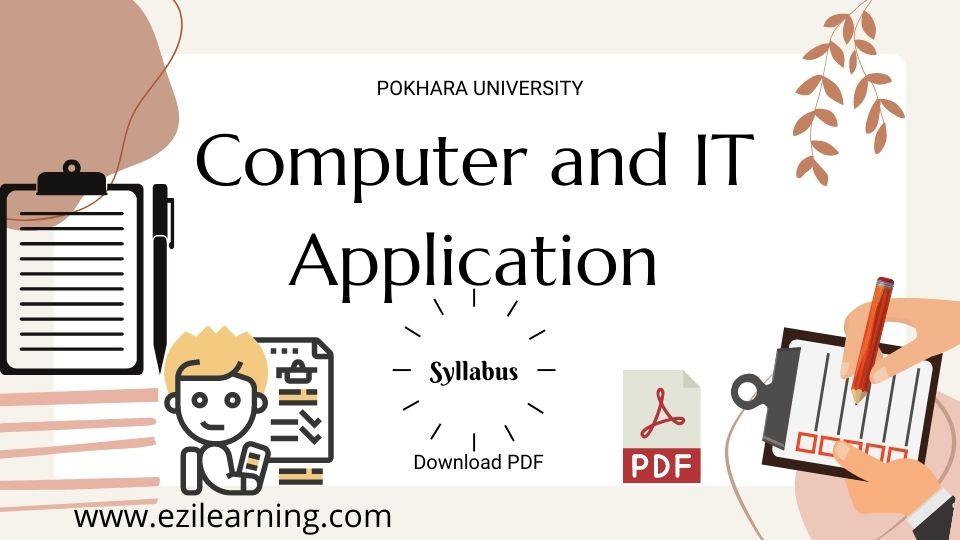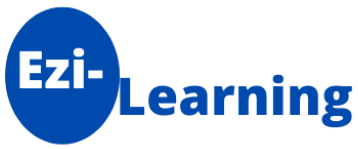Note: You can find here the syllabus of Computer and IT Application, Pokhara University. For simplicity for learners or students, we also provide the PDF of the Syllabus at the last of this article.

MIS 101 Computer and IT Applications
BBA, First Year, First Semester
Course Objectives
This course is designed to familiarize students with the usage of computer as a business and personal tool through the use of applications software. The objective of the course is to make students familiar with the basic principles of a computer system, including computer arithmetic, internal hardware, operating system, software applications, Internet and the World Wide Web.
Course Description
This course introduces students to the fundamental concepts of computers and computing including number systems, hardware, architecture, information processing, operating systems, networks (including the Internet) and office application software. Additionally, students are required to complete project work in a group of three or more, utilizing contemporary word processing, spreadsheet, presentation and database software.
Course Outcomes
By the end of this course, students should be able to:
- understand the basic computer vocabulary;
- understand the basic roles and responsibilities of the software, hardware and operating system;
- make the use of the applications; and
- locate and use sufficient and appropriate resources to learn how to apply computer application software features specifically using the software’s help facility and online tutorials and reference.
Course Contents
Unit I: Computing Devices, Software and Operating System 9 hours
Computer Arithmetic, Computer System (Central Processing Unit, memory and storage systems) Applications of computer, current trends in computing, I/O devices, Network Types, Topologies and Applications Introduction, types of computer software, system management software,
History of operating system, Functions of operating systems, process management, file management, memory management and security management
Unit II: Programming Language 2 hours
Introduction, Generation of programming language, Flowchart and Algorithms.
Unit III: Word Processor 6 hours
Learn to use help, Opening, creating, editing documents in different formats. Password protection, Customization of MS Word to user’s requirements, Checking spelling, thesaurus and grammar, Editing, formatting and changing appearance of the page and merging documents, Importing graphics and creating drawing objects, Creating tables, Embedding and linking, Creating a hyperlink, Customizing document (e.g. bullet and numbering, header and footer, printing area, putting a picture, track change, insert table of content, index, table of authorities and other techniques), Familiarization with Macro and Mail merge.
Unit IV: Spreadsheet 12 hours
Working with workbooks and worksheet, Entering data and selecting cells, editing work-sheet data, Creating formula and using functions(Spreadsheet Formulas, IF Functions, Date and Time Functions, Lookup Functions and Formulas, Math and Trig Functions, Random and Rounding Number Functions, Logical Functions, Text and Information Functions, Count and Database Functions, Statistical Functions, Financial Function), Sheet and workbook linking, cell referencing, working with charts, creating drawing and working with pictures, validating cell entries, sorting and conditional formatting, Making decision using Excel, Pivot tables; Graphs.
Unit V Presentation 4 hours
Fundamentals of presentation, Creating presentation slides using Microsoft power point, Different techniques of presenting slides, Arranging and sorting slides, Animation and other effects.
Unit VI: Database 5 hours
Introduction to Data processing, File Processing, Database, Entity Relationship (E-R) diagram (Symbols), Database Management system and Relation Database Management system.
Unit VII: Internet and World Wide Web 10 hours
Introduction, Internet Applications, Understanding World Wide Web, web browsers, using a search engine, email service, Protocols used for the internet
Basic Text
Balagurusamy, E. Fundamentals of Computers. New Delhi: Tata McGraw Hill.
References
1. Norton, P. Introduction to Computers. New Delhi: Tata McGraw Hill.
2. Dodge, M., & Stinson, C. Excel 2010 Inside Out. USA: MS Press.
Click below to download Computer and IT Application Syllabus
